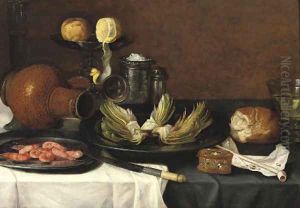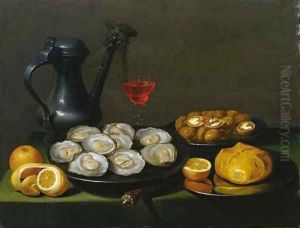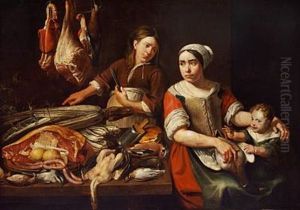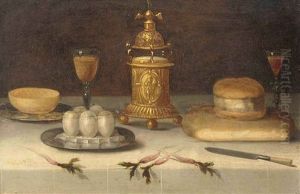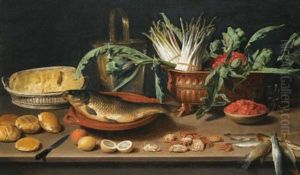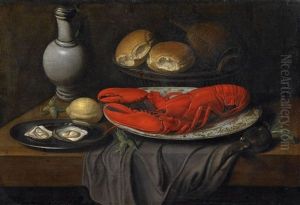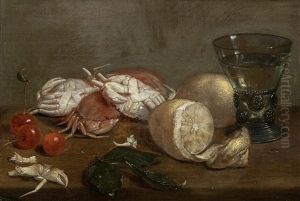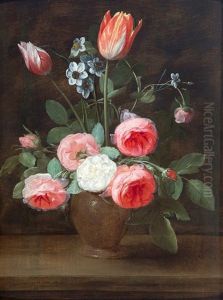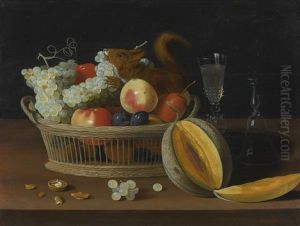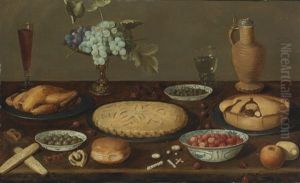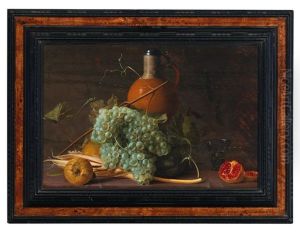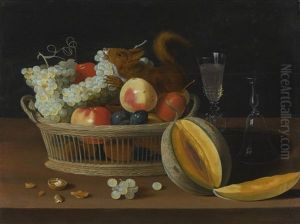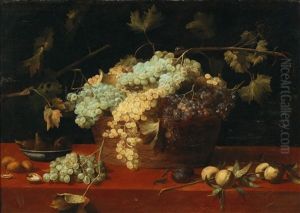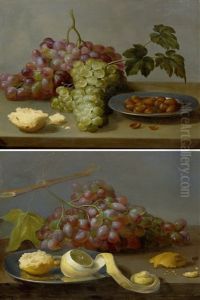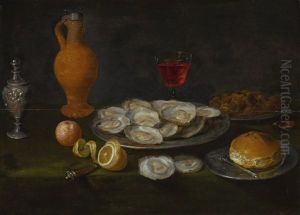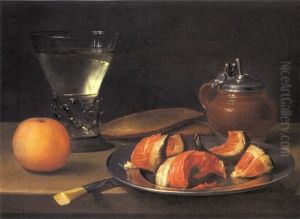Jacob Foppens Van Es: Paintings
Jacob Foppens van Es, sometimes known as Jacob Fopsen van Es, was a Flemish Baroque painter who was born in Antwerp in 1596. He was primarily known for his still-life paintings, which often featured an array of meticulously arranged objects such as fruits, flowers, and food items, often set on stone ledges. His work is noted for its fine detail, rich color, and the skillful rendering of textures and surfaces. Van Es was a contemporary of other Flemish still-life painters like Osias Beert and Frans Snyders and was part of a movement that established still-life as a popular genre in Flemish art.
Van Es likely trained in Antwerp, which was a significant center of artistic production during the 17th century. He became a master in the Antwerp Guild of Saint Luke in 1617, indicating a level of recognition and professional status within the artistic community. Throughout his career, he developed a distinctive style characterized by a sober and harmonious composition, devoid of the superfluous decoration that was common in the works of some of his contemporaries. Van Es's paintings often included a moral or symbolic message, which was typical of the period, with items such as skulls and hourglasses representing the transience of life.
Despite his focus on still lifes, there is evidence suggesting that van Es also painted religious works, though these are less known and less numerous. His still lifes, however, found favor with wealthy patrons, and he enjoyed a successful career. Little is known about his personal life, but his work left a lasting impression on the genre of still life, influencing later artists in the Flemish tradition.
Jacob Foppens van Es continued to paint until his death in Antwerp in 1666. His work has been collected by major museums around the world, and he is recognized for his contribution to the development of still-life painting in Europe. His precise compositions and the vivid realism of his paintings remain admired for their quiet beauty and meticulous attention to detail.
